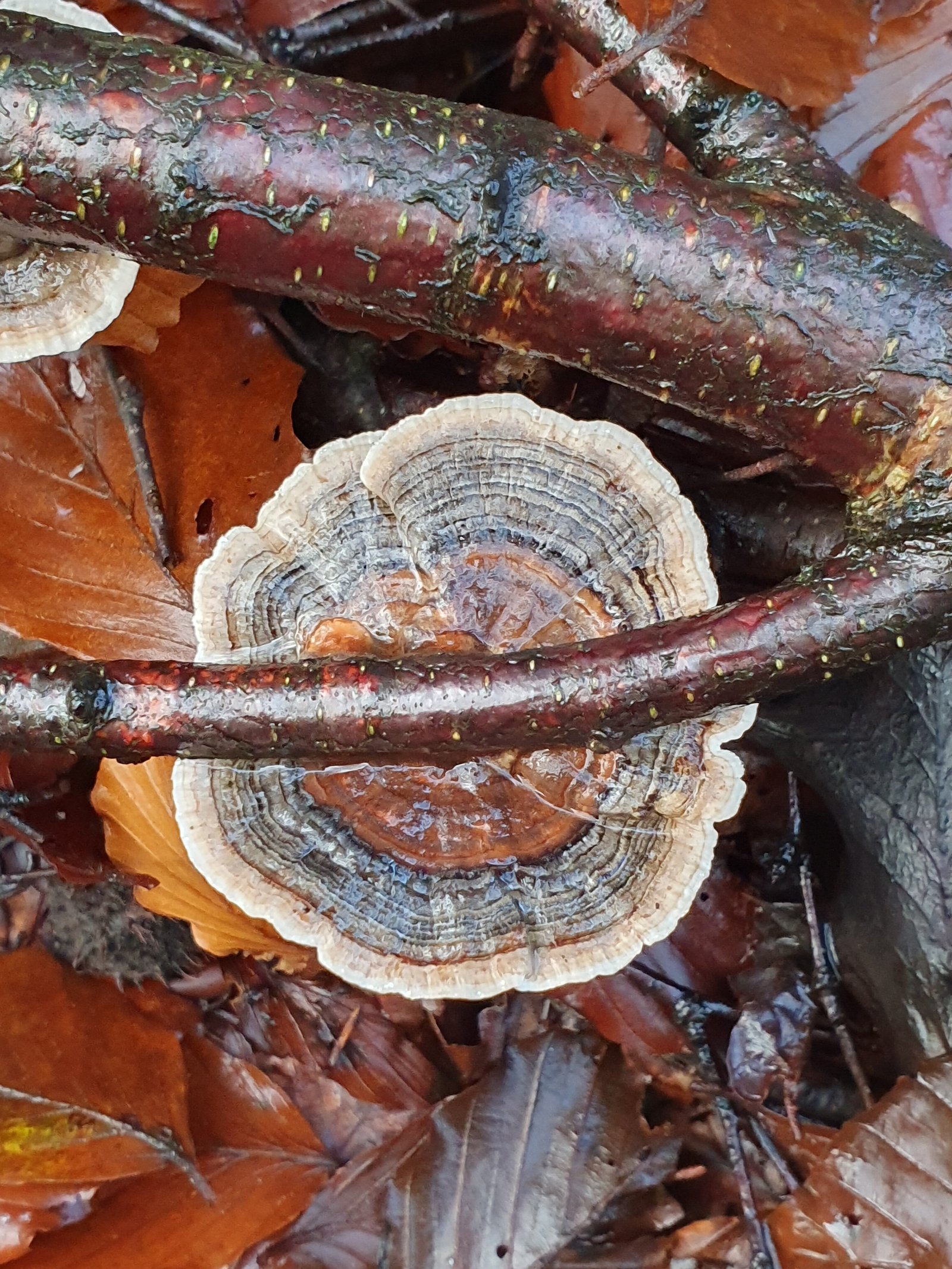On a recent trip to Epping Forest, I came across some bracket fungus growing on an old log pile. I didn’t know what it was at the time, so I took some pictures with the intention of identifying it later.


So here I am and it looks like it was Turkey Tail Fungus, one of the polypore mushrooms. It has many pores on the underside instead of gills to distribute its spores.
Can you eat it?
I’ve done a bit of research and I’ve found that whilst it’s not dangerous to eat, it is tough and tasteless, so not worth the effort.
So is it any use?
Well, according to many reputable sources, Turkey Tail fungus (Trametes versicolor) is very useful as a medicinal. A simple internet search brings up many brands of Turkey Tail fungus extracts for multiple ailments all around the world.
Cancer fighting
The big news appears to be that Turkey Tail fungus could be useful alongside conventional therapies for fighting cancer (https://www.hindawi.com/journals/isrn/2012/251632/). Apparently it has good immune system boosting properties. However, due to the fact that it has been used widely for a long time, it is unlikely that it could be patented, therefore the pharmaceutical companies wouldn’t be able to make money out of it, so research is unlikely to continue to be funded.
Some websites claim that studies in Asia have found that it can double the life expectancy of cancer patients, but they don’t cite their sources so it’s hard to verify.
Huffington post has an extensive article if you want to know more – http://www.huffingtonpost.com/paul-stamets/mushrooms-cancer_b_1560691.html
How is it used?
Nowadays, you can buy extracts from organically grown Turkey Tails. Traditionally, it was either boiled into a soothing tea, or chewed like gum! I may well give the tea a try, but I won’t be using it as gum! Boiling will kill any contaminants (including bugs), soften the flesh and extract the soluble polysaccharides (which are the medicinal compounds).
Identification
This site has some well structured information for identification etc. but basically, it has the multi-colour, fan shaped upper side that you can see in the pictures above. It has a white underside, with barely visible pores (up to 3 per mm), and white flesh. If it doesn’t have the white underside, it could be Velvet-Toothed polypore (Trichaptum biformis) with a violet, toothy underside, or the False Turkey Tail ((Stereum ostria) but that is more petal-shaped, hairy, and has a brown underside.

